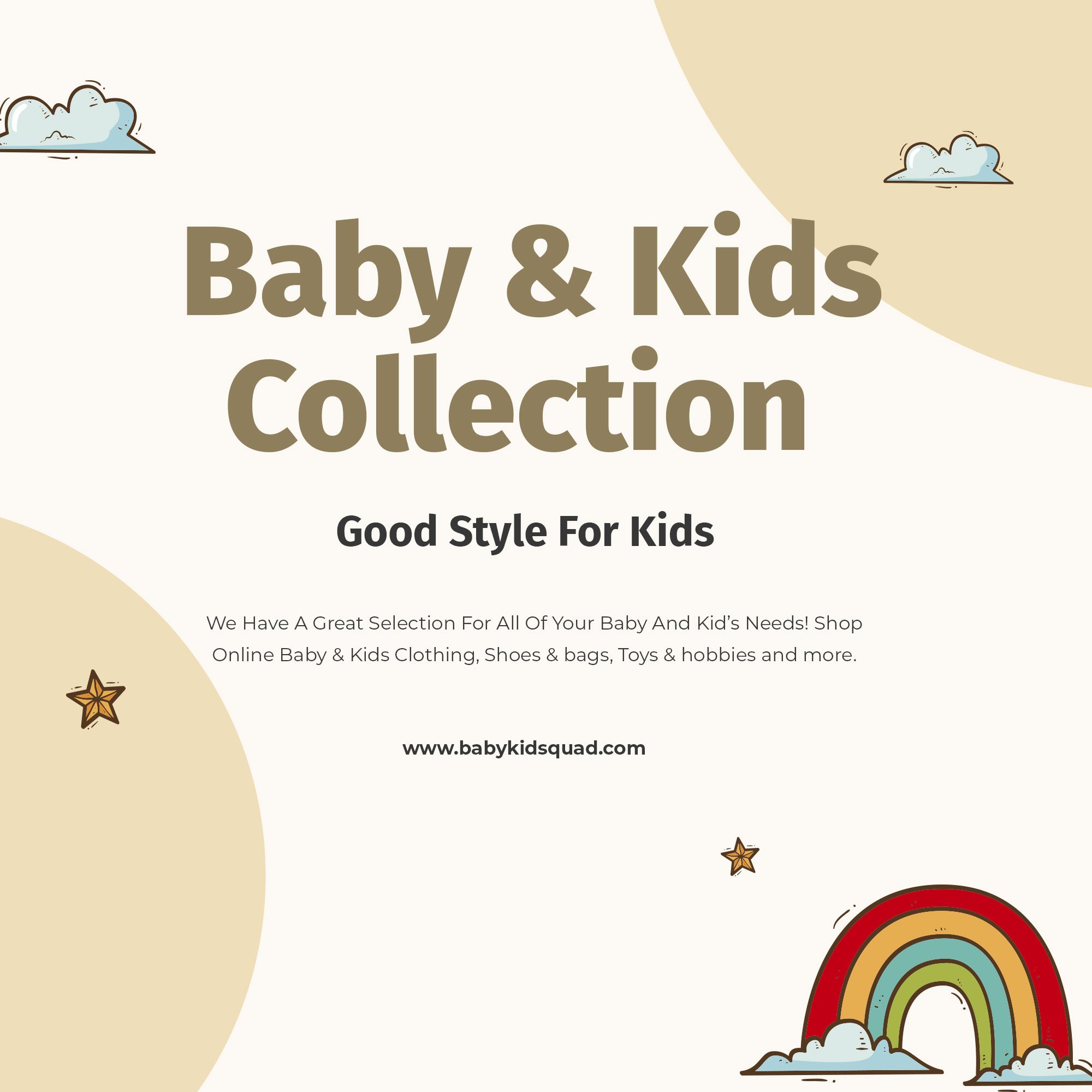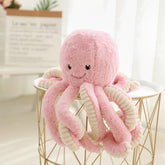How to Clean Dusty Plush Toys: A Comprehensive Guide for Parents
Table of Contents
- Introduction
- Why Clean Plush Toys?
- How Often Should You Clean Plush Toys?
- Methods for Cleaning Dusty Plush Toys
- Tips for Maintaining Clean Plush Toys
- Conclusion
Introduction
Did you know that children’s favorite plush toys can harbor dust, germs, and allergens that may affect their health? As parents, we often overlook the importance of maintaining the cleanliness of these cherished companions. According to pediatric health experts, stuffed animals can collect dust and bacteria, making regular cleaning essential, especially for those beloved toys that our children carry everywhere.
At Baby Kid Squad, we understand that plush toys often become more than just playthings; they are comfort items, friends, and sometimes even part of our children's bedtime rituals. That's why we want to equip you with the knowledge of how to clean dusty plush toys effectively. By the end of this post, you'll be ready to tackle any cleaning challenge while ensuring your child's favorite toys remain safe and snuggly.
In this blog, we'll explore various methods for cleaning plush toys, including washing techniques, spot-cleaning tips, and preventive care. We'll also highlight the significance of keeping these items clean for your child's health and emotional well-being. Whether you're dealing with light dust or stubborn stains, our guide will provide practical solutions that align with our mission at Baby Kid Squad: to make parenting easier and more stylish.
Together, let’s dive into the essential methods for cleaning plush toys, ensuring they remain a safe and comforting presence in your child's life.
Why Clean Plush Toys?
The Importance of Hygiene
Plush toys can accumulate dust, dirt, and allergens over time. Regular cleaning not only helps maintain their appearance but also ensures that your child remains healthy. Studies show that children with allergies or asthma may react more strongly to allergens found in stuffed animals, making it crucial to keep these toys clean.
Emotional Connection
For many children, plush toys provide comfort and security. Cleaning these toys can help preserve their integrity and appearance, ensuring that they remain a source of joy rather than a source of worry. Plus, a clean toy is more likely to be a beloved companion rather than a neglected item.
How Often Should You Clean Plush Toys?
Regular Cleaning Schedule
As a general rule, plush toys that are frequently used should be cleaned every month. If your child sleeps with their plush toy or takes it everywhere, consider cleaning it more often—perhaps once a week.
Special Circumstances
If your child has been sick, it’s imperative to clean their plush toys immediately to eliminate any lingering germs. Additionally, if anyone in your household suffers from allergies, a more frequent cleaning schedule is advisable to minimize allergens.
Methods for Cleaning Dusty Plush Toys
1. Machine Washing
Many plush toys can be safely cleaned in a washing machine. However, it's essential to check the care label first.
Steps:
- Preparation: Remove any batteries or electronic components.
- Protect the Toy: Place the plush toy in a mesh laundry bag to prevent damage during the wash.
- Washing: Use a gentle cycle with cold water and a mild detergent. Adding a laundry sanitizer can help eliminate bacteria.
- Drying: Air-dry the toy in a well-ventilated area. Avoid high heat settings in the dryer to protect delicate materials.
Machine washing is one of the most effective methods to keep plush toys clean and germ-free, especially for toys made from durable materials.
2. Hand Washing
For plush toys that are more delicate, hand washing is a safer option.
Steps:
- Prepare the Basin: Fill a large basin or tub with cool water and add a few drops of mild detergent.
- Clean the Toy: Submerge the toy and gently scrub it with a soft cloth or sponge, paying special attention to any stained areas.
- Rinse: Thoroughly rinse the toy with clean water to remove all soap residue.
- Dry: Squeeze out excess water and lay the toy flat on a clean towel to dry.
Hand washing is particularly effective for toys with intricate parts or delicate fabrics that could be damaged in a machine.
3. Spot Cleaning
Sometimes, only specific areas of a plush toy need attention, especially if your child has spilled something on it.
Steps:
- Dampen a Cloth: Use a clean cloth dampened with a mixture of water and mild detergent.
- Clean the Stain: Gently blot the stained area without soaking the toy. Use a soft brush for more stubborn spots.
- Dry: Wipe the area with a dry cloth and let it air-dry.
Spot cleaning is a quick and efficient way to maintain plush toys between washes.
4. Baking Soda Method
For a non-water cleaning method, baking soda can be an effective way to freshen up plush toys.
Steps:
- Add Baking Soda: Place the plush toy in a large plastic bag and add a few tablespoons of baking soda.
- Shake: Seal the bag and shake it vigorously for about 10 minutes. This will help absorb odors and remove dust.
- Dust Off: Remove the toy from the bag and brush off any remaining baking soda.
This method is particularly useful for toys that should not get wet, preserving their integrity while still providing a clean.
5. Freezing for Disinfection
For plush toys that cannot be washed, freezing can be an effective way to kill germs.
Steps:
- Bag the Toy: Place the toy in a plastic bag and seal it tightly.
- Freeze: Leave the bag in the freezer overnight.
- Thaw and Clean: After removing it from the freezer, allow the toy to thaw before brushing off any surface dust.
Freezing can eliminate many germs, making it a great option for delicate toys.
6. Vacuuming
For quick clean-ups, vacuuming can help remove surface dust and dirt.
Steps:
- Use a Handheld Vacuum: Use a handheld vacuum with a brush attachment to gently vacuum the surface of the plush toy.
- Focus on Details: Pay attention to seams and areas where dust may collect.
While this method doesn't replace a thorough cleaning, it's a great way to maintain plush toys between washes.
Tips for Maintaining Clean Plush Toys
Regular Maintenance
To prevent plush toys from becoming excessively dirty, establish a routine of regular maintenance. Encourage your child to keep their toys in designated spaces and to avoid using them during meals or outdoor play.
Protective Storage
When storing plush toys, consider wrapping them in tissue paper or placing them in breathable bags to protect them from dust while maintaining their shape.
Use of Fabric Fresheners
Occasionally using fabric fresheners can help keep plush toys smelling fresh. Just be sure to choose products that are safe for children's toys.
Conclusion
Now that we’ve explored how to clean dusty plush toys, you’re equipped with the knowledge to keep your child's favorite companions clean, comfortable, and safe. Regular cleaning not only maintains the aesthetics of these cherished toys but also plays a crucial role in your child's health.
At Baby Kid Squad, we believe that every aspect of your parenting journey should be stylish and practical. By incorporating these cleaning methods into your routine, you can ensure a safe and pleasant environment for your little ones.
For more stylish and practical baby and children’s essentials, don’t forget to check out our curated collections at Baby Kid Squad. Whether you need baby clothing, toys, or accessories, we have everything you need to make parenting a little easier and a lot more stylish.
FAQ
1. How often should I clean my child's plush toys?
It's recommended to clean plush toys at least once a month, or more frequently if they are used daily or if your child has allergies.
2. Can all plush toys be machine washed?
Not all plush toys are machine washable. Always check the care label for specific washing instructions before proceeding.
3. What should I do if my plush toy has electronic parts?
For toys with electronic components, avoid submerging them in water. Instead, opt for spot cleaning or the baking soda method.
4. Is it safe to use disinfectant wipes on plush toys?
Disinfectant wipes may leave residues that could be harmful to plush toys. It’s safer to use methods like spot cleaning with a damp cloth and mild detergent.
5. How can I keep plush toys clean longer?
Encouraging your child to keep toys in designated areas, using protective storage, and spot cleaning quickly after spills can help maintain cleanliness.
By following these guidelines, you’ll ensure that plush toys remain a beloved and hygienic part of your child’s life. Let’s keep those cuddly friends clean and safe!





